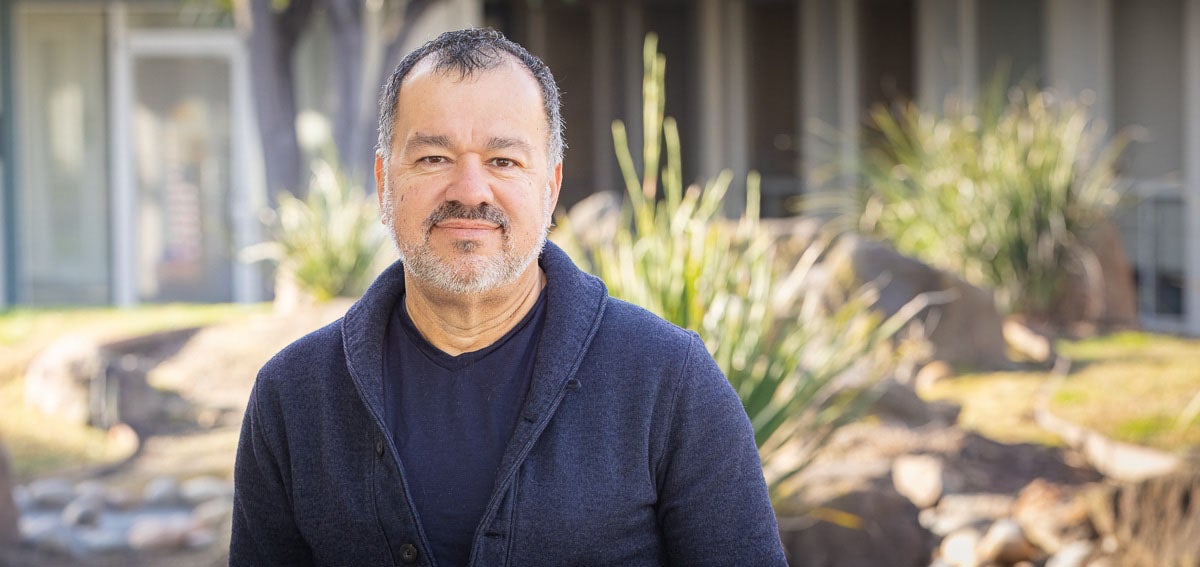
As clinicians providing behavioral health services at a federally qualified health center and a private medical office in California’s safety net, we are taking advantage of the increased flexibility and expanded Medi-Cal reimbursement for telehealth that took effect in March. This experience has reinforced what we’ve known for a long time: Health care visits conducted by phone or video — commonly referred to as “telehealth” services — are critical for our patients and could reduce the pervasive behavioral health disparities they face.
Behavioral health conditions are common and treatable. One in six Californians experiences a mental illness, and people with the lowest incomes have the highest rates of serious mental illness. Behavioral health conditions were the leading cause of disability and disease nationally, according to 2017 data, and among wealthy nations, the US had the highest mortality rate related to behavioral health disorders.
The COVID-19 crisis has exacerbated people’s behavioral health needs, causing unprecedented health, social, and economic stressors for California’s population. In April to June, the share of people reporting symptoms of depression or anxiety more than tripled from the same interval last year. Advocates are calling attention to increasing rates of domestic violence, child abuse, and substance use. Anecdotally, we see this in our own practices as well.
Despite the surging prevalence of significant behavioral health conditions, only about 1 in 3 people with a mental health condition receives treatment, and only 1 in 10 with a substance use disorder gets help. People of color experience worse behavioral health status, poorer treatment outcomes, and greater difficulty accessing services. These persistent barriers to obtaining care are multifactorial and include stigma, bias, structural racism, cultural and linguistic hurdles, workforce shortages, and fractured payment systems.
A Promising Part of the Solution
In four months providing behavioral health services via telehealth, we have seen promising improvement in our ability to serve our most vulnerable patients and to reduce health inequity. We’ve observed the powerful way that telehealth overcomes many of the most stubborn barriers to accessing services facing communities of color and low-income populations. Here are key benefits emerging from the sharply rising use of telehealth services in the safety net:
Increasing Access to Care
No-show rates have plummeted, as patients have been relieved of navigating work, childcare, and transportation challenges to keep their appointments. These barriers are typically more acute for people with low incomes. Telehealth may be reducing the stigma associated with attending treatment in-person — especially for people receiving addiction services.
An addiction counselor at a community health center in Northern California shared that the no-show rate had plunged from 60% before the pandemic to 11% one month after the shelter-in-place order was issued. This debunks outdated ideas about clients’ “readiness for change” in treatment of addictive disorders. Perhaps logistical or stigma-related barriers, not lack of desire or readiness for treatment, cause people to miss behavioral health care appointments.
Bilingual Providers
A longstanding problem in behavioral health is unmet demand for bilingual providers. Telehealth can allow organizations to contract or hire bilingual practitioners and other culturally responsive staff from anywhere in the state.
“One Northern California health center I work with has contracted its first bilingual therapist to provide telehealth care. She lives over 200 miles from the clinic.”
—Elizabeth Morrison
Increasing Population Health Practices
Historically, especially in the safety net, most patients are seen for behavioral health needs only after a referral from another provider. Telehealth allows us to be proactive. Now, many organizations are sending behavioral health providers population health lists, and providers are then “cold-calling” patients to offer services, bypassing referral systems.
“At my health center, we sent a mass text message to patients offering a telephone call from a therapist. We received twice the percentage of responses as we did when we sent messages before the pandemic. Many patients texted back notes of gratitude, such as, ‘Yes, please. God bless you. I’m so scared right now.’ We were able to return calls to more than 400 patients and provide needed psychological first aid.”
—Elizabeth Horevitz
Improving Quality of Care
Evidence suggests that telehealth helps improve the quality of behavioral health care. Much of the evidence supporting integrated behavioral health services was based on studies of primary care providers’ management of patients with depression. This care included phone visits for those who did not attend sessions in person. Telehealth can enhance therapeutic relationships. Video visits allow us to work with people in a more intimate way and see them in their own environments, allowing us to better understand their strengths and challenges.
“An adolescent patient showed me around her room, which allowed me to see her pride flag. That prompted a meaningful discussion about the fear she felt for her younger brother and the efforts she made to show him acceptance and support.”
—E. M.
“A long-time patient proudly showed me his rose garden, allowing me to gain a deeper understanding of his strengths and ability to create beauty in his life.”
—E. H.
Next Steps
Telehealth should become a permanent component of the reimbursement structure for behavioral health services so health inequities can be reduced for California’s most vulnerable populations. California should advance this effort by:
- Formalizing processes to learn each patient’s preferences for receiving behavioral health services by telephone, video, or in-person treatment. When in-person treatment becomes safe again, it is important to honor these preferences to affirm patient autonomy, demonstrate respect for patient choices, and strengthen patients’ commitment to treatment.
- Conducting research and gathering practice-based lessons. Organizations providing telehealth services should obtain feedback from patients and be guided by it. While studies show that specific modalities, such as cognitive behavioral therapy, can be delivered effectively using telehealth, more research is needed to understand which populations, time periods, conditions, approaches, and characteristics do and do not make telehealth the best choice for care.
- Focusing on providers’ telehealth experiences as integral data in modeling the service. Before the COVID-19 pandemic erupted, the health care workforce was already suffering the effects of scarcity and burnout. We should not model telehealth services on existing delivery practices that we know can deplete the workforce, drive down job satisfaction, and worsen provider health. Importantly, telehealth can increase flexible scheduling, which is desired by 90% of employees and which has been shown to improve the mental and physical health of the workforce. Telehealth offers the opportunity to improve provider well-being.
- Ensuring that policies and practices do not exacerbate existing health disparities for people with limited access to technology. Telehealth typically requires patients to have smartphones with data plans and to download apps to obtain services. We must ensure that the expansion of telehealth doesn’t overlook those whose access to technology falls short of that. Organizations should dedicate health care workers to helping patients overcome barriers to telehealth and prioritize access to telehealth in their health equity work. They should also partner with community-based organizations to provide private spaces and access to computers as well as to support policies that direct resources to increasing telehealth access.
Emerging research and our personal experiences make clear that telehealth is a critical tool for increasing access to vital behavioral health services and reducing health inequity. The need for behavioral health services was dire before COVID-19, and the crisis has magnified the problem. The effects of the pandemic will continue long after a vaccine is developed. We have witnessed the power of telehealth to help us meet this need for our most vulnerable populations. We should never allow the system to go back to the way things were.
See all of CHCF’s resources on Telehealth on our website.
Authors & Contributors

Elizabeth Morrison
Elizabeth Morrison is the CEO of EM Consulting, a licensed clinical social worker, and has a master’s degree in addiction counseling.
She has over 15 years of experience in developing effective and sustainable integrated behavioral health services, complex care programs, and other whole health practices in multiple health care settings. Morrison is a motivational interviewing trainer and has been teaching research-based courses in motivational interviewing, anti-bias, and other empathy-based communications for more than 20 years. She works with nonprofit safety-net health organizations, including community clinics, Medicaid health plans, health foundations, and other social justice nonprofits, and is a CHCF Health Care Leadership Program fellow.

Elizabeth Horevitz
Lizzie Horevitz is chief behavioral health officer at Marin Community Clinics (MCC), a Federally Qualified Health Center providing health services to over 37,000 insured and uninsured people in Marin County, California.
She oversees MCC’s portfolio of behavioral health services. She provides trauma-informed, culturally tailored, and evidence-based integrated care to all and specializes in addressing health and mental health inequities. Horevitz is a trainer in Problem Solving Therapy and consults on integrated behavioral health best practices for safety-net and educational settings. She received her MSW and PhD from UC Berkeley and is a CHCF Health Care Leadership Program fellow.




